dresden
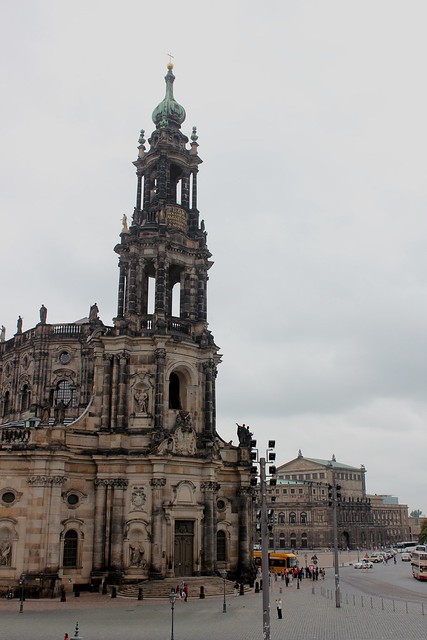
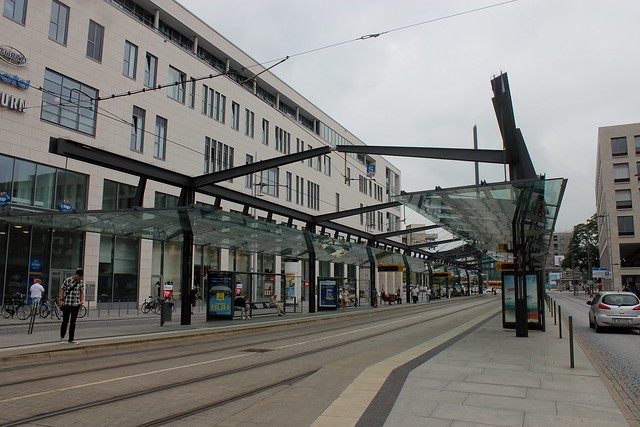

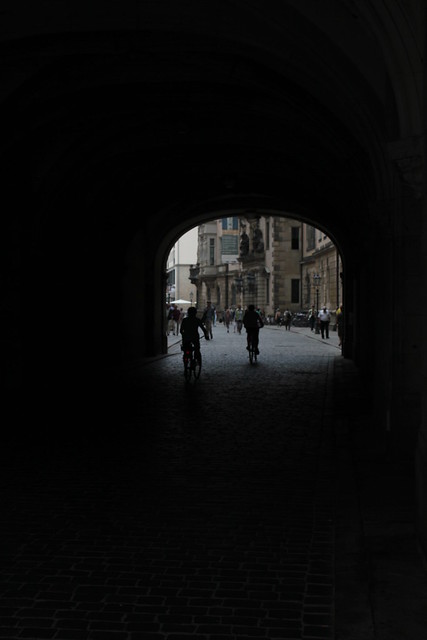
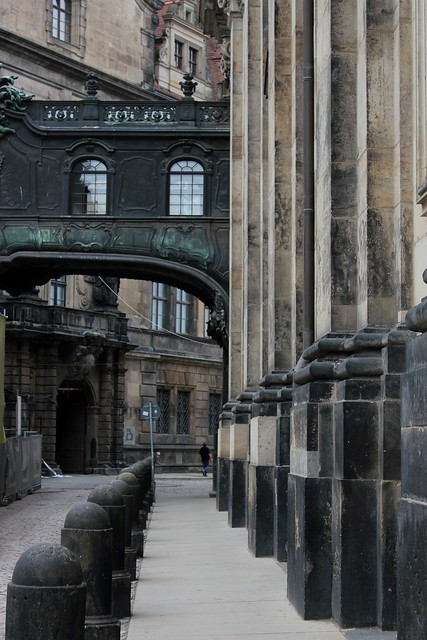
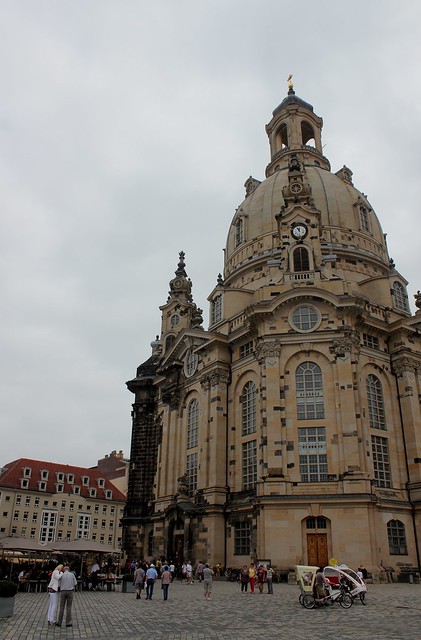
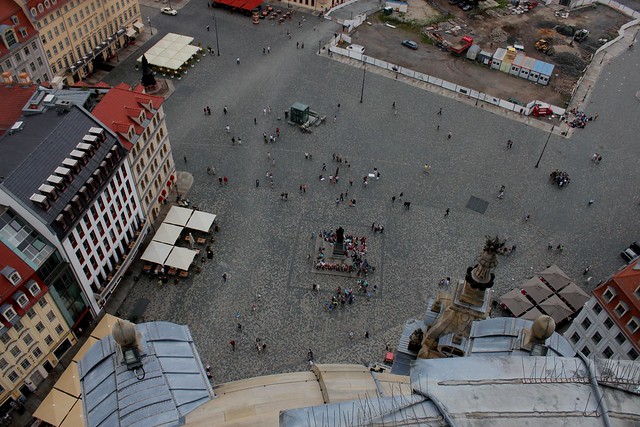
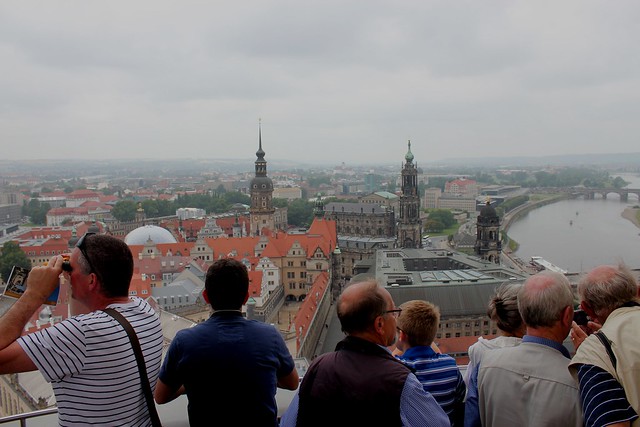
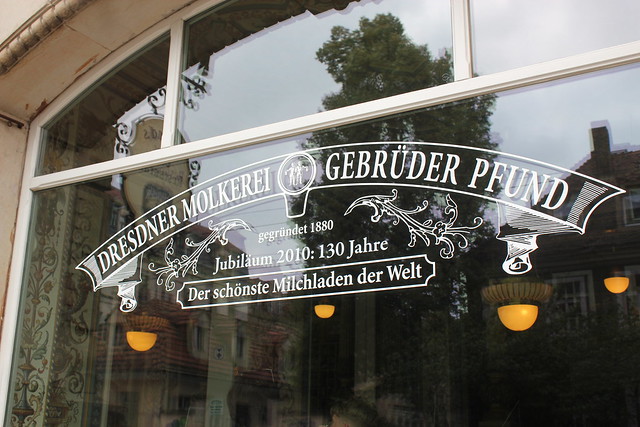
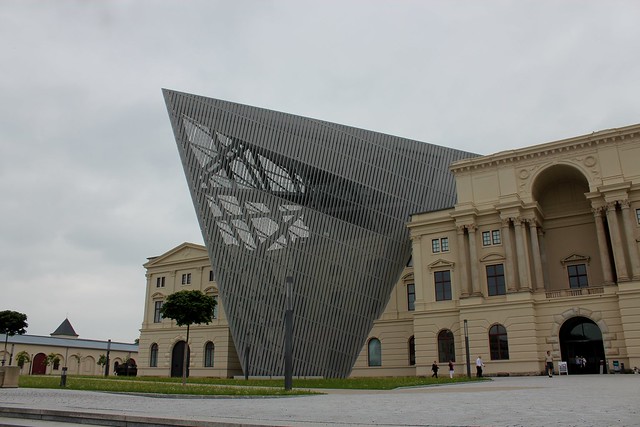
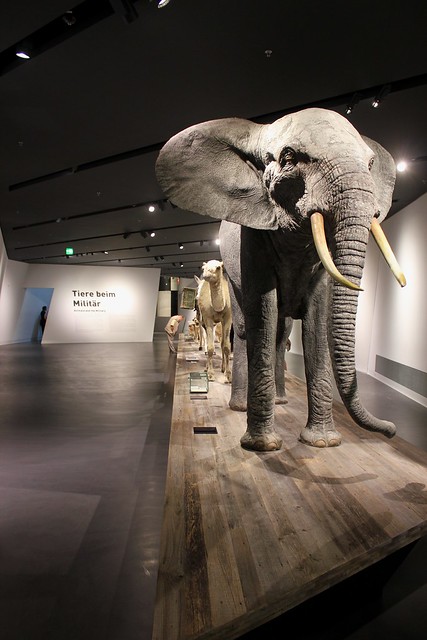
I reached Dresden after an incredible train journey that ran along the Elbe river, past green, steep hills topped by limestone formations similar to the ones I had seen at České Švýcarsko. It was a quiet, grey, cool morning, and after sleepy Decin, it felt dazzlingly cosmopolitan - glass and steel, sleek yellow trams, smartly suited commuters briskly walking by.
I found my hotel, checked in, found a generic coffee joint, and sat down with a map to orient myself. In any city where the river is its lifeblood (not just economically, but socially and culturally), its banks are a good for interesting walks. So off I went.
Dresden has a long and splendid history as the capital of the Saxon kings, but I only became familiar with it because it was the target of a controversial Allied aerial bombing in World War II, which killed thousands and destroyed a good percentage of the historic city centre. Knowing this makes a walk through the rebuilt "Old Town" district feel like something of a miracle - a quietly spectacular parade of towering domes, delicate spires, baroque whirls, elegant streets. I deliberately avoided pictures of the city before I arrived, so it was something of a moment when I rounded a corner and found myself staring at the Fürstenzug, an incredible "mural" made of Meissen porcelain, the largest of its kind in the world.
I didn't linger long - I had a museum I couldn't miss that day because it would be closed the next day. So I hopped on a tram at the beautiful tram stop on Postplatz (pictured above) and headed for the Militärhistorischen Museum, or rather, Military History Museum, which features a striking "wing" by Daniel Libeskind. This write-up by The Economist (read the comments as well) nicely sums up what the place is about. It has a somewhat ambivalent approach towards the topic and that lends itself to a truly interactive experience - your mind is free to make of the experience what you will, even as you absorb the facts.I highly recommend a visit.(I also met incredibly helpful staff when I was there, who looked up a restaurant for me and gave me very detailed directions.)
I returned to the historic quarter the next day to take pictures. I climbed to the top of the Frauenkirche for a view over Dresden, and made a stop at the Kunsthalle im Lipsiusbau to check out a rather promising-looking exhibit on Xu Jiang. In the afternoon, I made for Louisenstrasse (and its surrounding streets) on the newer side of the city (Neustadt) on the recommendation of a receptionist at the Military History Museum to check out the independently-owned boutiques in the area, which seem to sell an profusion of indie labels and vintage alongside records and random knick knacks. The shopping was not that interesting but the people-watching was (the area has plenty of cafes - in some ways reminding me of Berlin). and I had more fun sitting down than I did walking around. And using the free wifi.
I had dinner at a restaurant recommended by the New York Times, inadvertently. I was cutting through the charmingly restored Kunsthofpassage (a collection of little shops selling clothing, antiques and random things) when I came across a restaurant in a courtyard that was filled with happy-looking people. I was hungry, so I stopped and happily enough, the proprietor of the restaurant - called Lila Sosse - turned out to be friendly and happy to talk about his food and I had a great dinner - it was German food that had become familiar at this point but done with a lighter hand; I had been very sick of the heavy-going things I had been eating since I arrived in Budapest. It is primarily a "tapas"-style place but they also serve meal portions as well as a smaller menu of mains, which the proprietor patiently explained to me as it was not on the English menu. I found out that it had been reviewed in NYT later while chatting with a fellow tourist in the restroom.
I Googled the article and found that it also recommended a bar called Ostpol which was nearby, so I decided to stop for a drink. On the way I passed a very lively bar having what appeared to be tango night and so I had a drink (but not a dance) there first.
Ostpol was quiet-ish on a Wednesday but there was a gig on which attracted a small but enthusiastic crowd - it's a nice cozy space for small gigs and I thoroughly enjoyed the low-key "The Lives of Others" vibe of the place.
Dresden has a gentle pace of life that melds the modern efficiency of a city with the laidback charm of a small town, to say nothing of the beauty of its historic district, and liveliness of its cultural scene and its sobering role in modern history. I was glad to have come.
Stay: At a short notice and on a budget, I went for the Etap, and it was surprisingly tasteful. The location is excellent, a walking distance from the historic quarter, attached to a handy shopping mall for supplies, and easily accessible by trams to various districts in Dresden.
Eat: Watzke (recommended by the museum folk) offers the classic German beer hall experience, complete with excellent beer and hearty servings of meat and potatoes. I can't remember the meat part of my order but it was served with an incredible fried bread thing that I think was called a bread dumpling. Lila Sosse is also a worthwhile stop.
Go: Apart from the places I mentioned above, Pfunds Molkerei, snooty staff aside, served an incredible cheese plate for 4 euros, and the shop may very well live up to its self-proclamation as "the most beautiful dairy in the world". The courtyard of the Zwinger Palace is a lovely place to rest and take in the palace, and I wished I had managed to get tickets for something at the stunning Semperoper.

Comments
eggtartbox: It's very much worth a visit! I actually wish I knew more about architecture to better appreciate it.
Watzke was easy to get from the museum by bus, very convenient way to end the day... :)
Dresden has been brought up to me a number of times by Germans who lament the destruction of this beautiful city. My perspective prevents me from genuinely sympathizing, not because it wasn't a loss, but because first I need to acknowledge the significant ways that Germany brought such destruction on to the world.
Yes, I have a lot of frustration with this country that is so familiar to me - it was my mother's homeland, and the language is therefore both that of friend and foe. It is complicated. I always value hearing about positive experiences, because it helps me bridge my own mixed feelings.
I admire the rebuilding effort in Dresden but at the back of head I'm always conscious of the reasons that led to the destruction - I definitely identify with your mixed feelings, although my interest in the subject is nowhere as personal and as yours.
It has to be said that the Military History Museum tackles this subject along with Germany's role in the wars quite well, and so I found my visit to Dresden a very illuminating one.
It's also interesting (I wish I had a better word than "interesting'!) for me to compare how Germans remember the wars with how countries closer to home like Japan, China, Cambodia and Vietnam deal with their own histories.
Thanks for sharing your thoughts on this - it makes for sobering thinking.